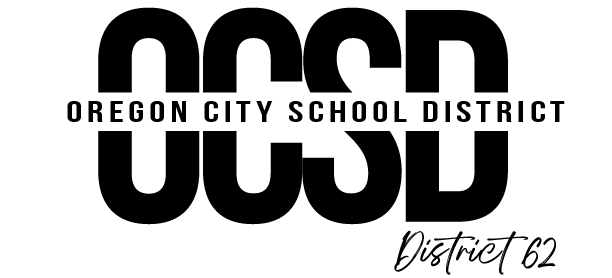Translation & Interpretation Specialist
REPORTS TO:
Director of Teaching & Learning or designee.
SUPERVISES:
None
GENERAL DESCRIPTION OF THE POSITION:
Under the direction of the Director, the Translation and Interpretation Specialist provides support in translating district and school documents and provides interpretation services at district and school functions.
ESSENTIAL FUNCTIONS:
1. Providing accurate and completed written translations of district and school documents.
2. Providing accurate oral interpretation at district and school functions (e.g., parent meetings, Individualized Education Planning meetings, conferences, school board meetings). This includes simultaneous interpretation on occasions.
3. Act as a liaison between the school and parent in order to support access to information about their student’s learning and progress. Support parents navigating the school system.
4. Adapt translations to students' cognitive and grade levels, collaborating with educational team members as necessary.
5. Check translations of technical terms and terminology to ensure that they are accurate and remain consistent throughout translation revisions. Proofread, edit, and revise translated materials.
6. Refer to reference materials, such as computerized terminology banks, as needed to ensure translation accuracy.
7. Compile information on content and context of information to be translated or interpreted.
8. Understand the intended audience for translations and interpretation services.
9. Maintain the integrity of confidential information relating to a student, family, staff, or community member, and use or relay confidential information only in the course of performing assigned responsibilities.
10. Ability to use Microsoft Office suite and Google program tools.
11. Check original texts or confer with authors to ensure that translations retain the content, meaning, and feeling of the original material.
12. Hours will vary including some nights and weekends, depending on district needs, e.g., evening conferences and other school meetings.
MINIMUM QUALIFICATIONS:
1. English language proficiency — Knowledge of the structure and content of the English language written and oral, including the meaning and spelling of words, rules of composition, and grammar.
2. A second language proficiency as determined important by the district — Knowledge of the structure and content of the second language, witten and oral, including the meaning and spelling of words, rules of composition and grammar, and pronunciation.
3. Certification of translation and interpretation skills by completion of the ESD certification or similar program.
PREFERRED QUALIFICATIONS:
● Experience in translation and interpretation in an educational (K-12) setting.
● Associate’s degree or higher.
KNOWLEDGE, SKILLS AND ABILITIES:
1. Ability to work independently and in a highly organized manner.
2. Ability to establish and maintain effective professional relationships and work collaboratively with administrators, staff, students, parents, and the general public.
3. Ability to perform the essential functions of the position.
Interpretation
4. Read, process and word process information simultaneously from one
language to the other.
5. Ability to listen to speakers' statements to determine meanings and to
transcribe conversations, using electronic listening systems as necessary.
6. Ability to interpret in an educational (K-12) setting.
Translation:
7. Ability to word process all translations; strong knowledge of PC or MAC and
word processing programs such as Microsoft Office suite and Google
programs.
8. Ability to translate in an educational (K-12) setting.
PHYSICAL REQUIREMENTS:
1. Employee may need to:
a. Stand Continuously Frequently Occasionally Not at all
b. Walk Continuously Frequently Occasionally Not at all
c. Sit Continuously Frequently Occasionally Not at all
d. Drive Continuously Frequently Occasionally Not at all
2. Employee may use hands for:
a. Single grasping Continuously Frequently Occasionally Not at all
b. Pushing & pulling Continuously Frequently Occasionally Not at all
c. Fine manipulation Continuously Frequently Occasionally Not at all
3. Employee may use wrists for:
a. Twisting/turning Continuously Frequently Occasionally Not at all
4. Employee may need to:
a. Bend Continuously Frequently Occasionally Not at all
b. Twist Continuously Frequently Occasionally Not at all
c. Squat Continuously Frequently Occasionally Not at all
d. Climb Continuously Frequently Occasionally Not at all
e. Reach(above shoulder) Continuously Frequently Occasionally Not at all
5. Environment:
a. Outside Continuously Frequently Occasionally Not at all
b. Inside Continuously Frequently Occasionally Not at all
6. Lifting:
Sedentary work: Lifting 10 pounds maximum and occasionally lifting and/or carrying articles such as ledgers, books, and small tools. Although a sedentary job is defined as one which involves sitting, a certain amount of walking and standing is often necessary in carrying out job duties. Jobs are sedentary if walking and standing are required only occasionally and other sedentary criteria are met.
Light work: Lifting 20 pounds maximum with frequent lifting and/or carrying of objects weighing up to 10 pounds. Even though the weight lifted may be only a negligible amount, a job is in this category when it requires walking or standing to a significant degree or when it involves sitting most of the time with a degree of pushing and pulling of arm and/or leg controls.
Medium work: Lifting 50 pounds maximum with frequent lifting and/or carrying of objects weighing up to 25 pounds.
Heavy work: Lifting 100 pounds maximum with frequent lifting and/or carrying of objects weighing up to 50 pounds.
Very heavy work: Lifting objects in excess of 100 pounds with frequent lifting and/or carrying of objects of 50 pounds or more.
TERMS OF EMPLOYMENT:
As agreed. Salary to be established by the labor agreement and ratified by the Board of Education.
RANGE:
16
EVALUATION:
Performance of this job will be evaluated annually by the principal in accordance with the Board's policy on evaluation.

